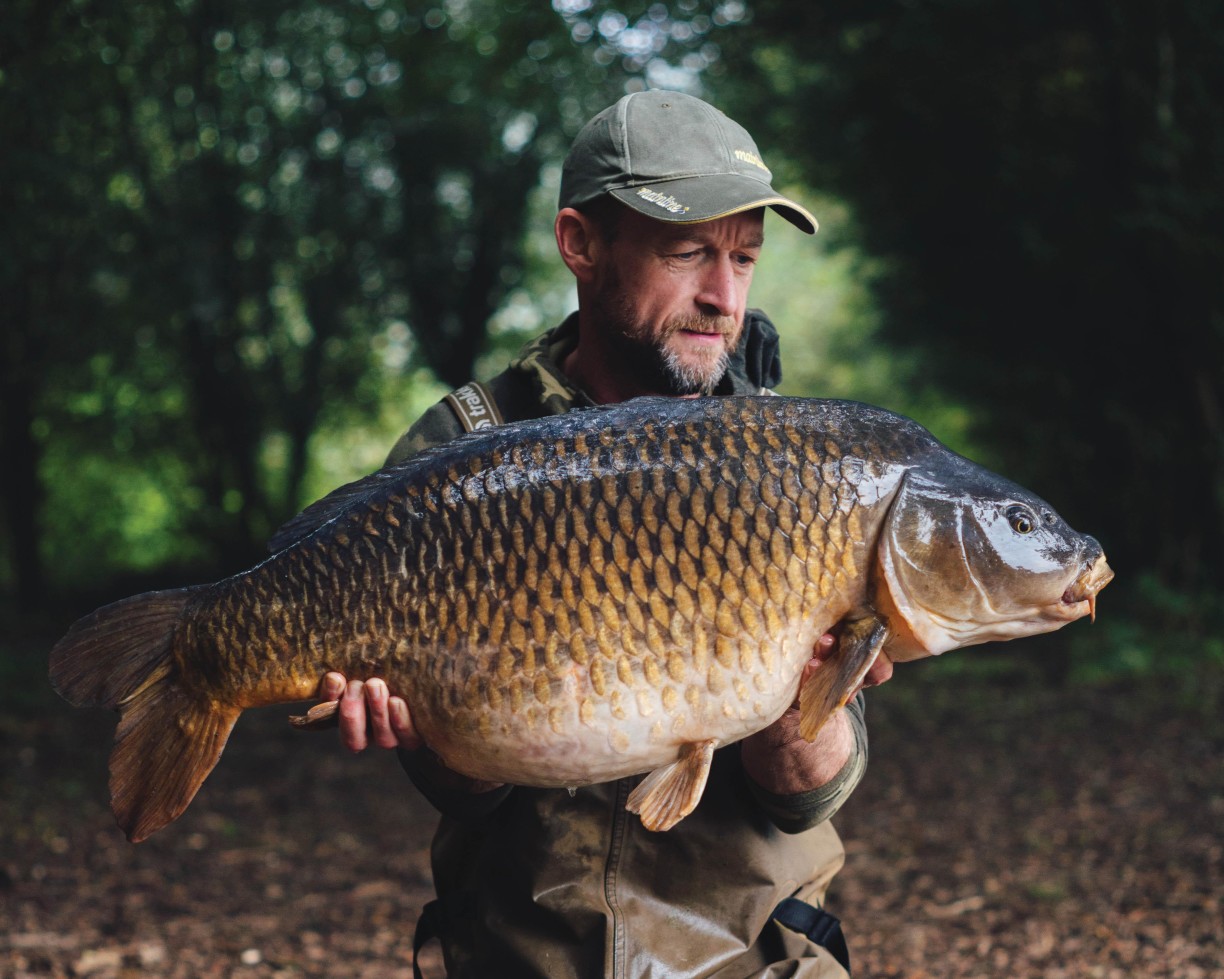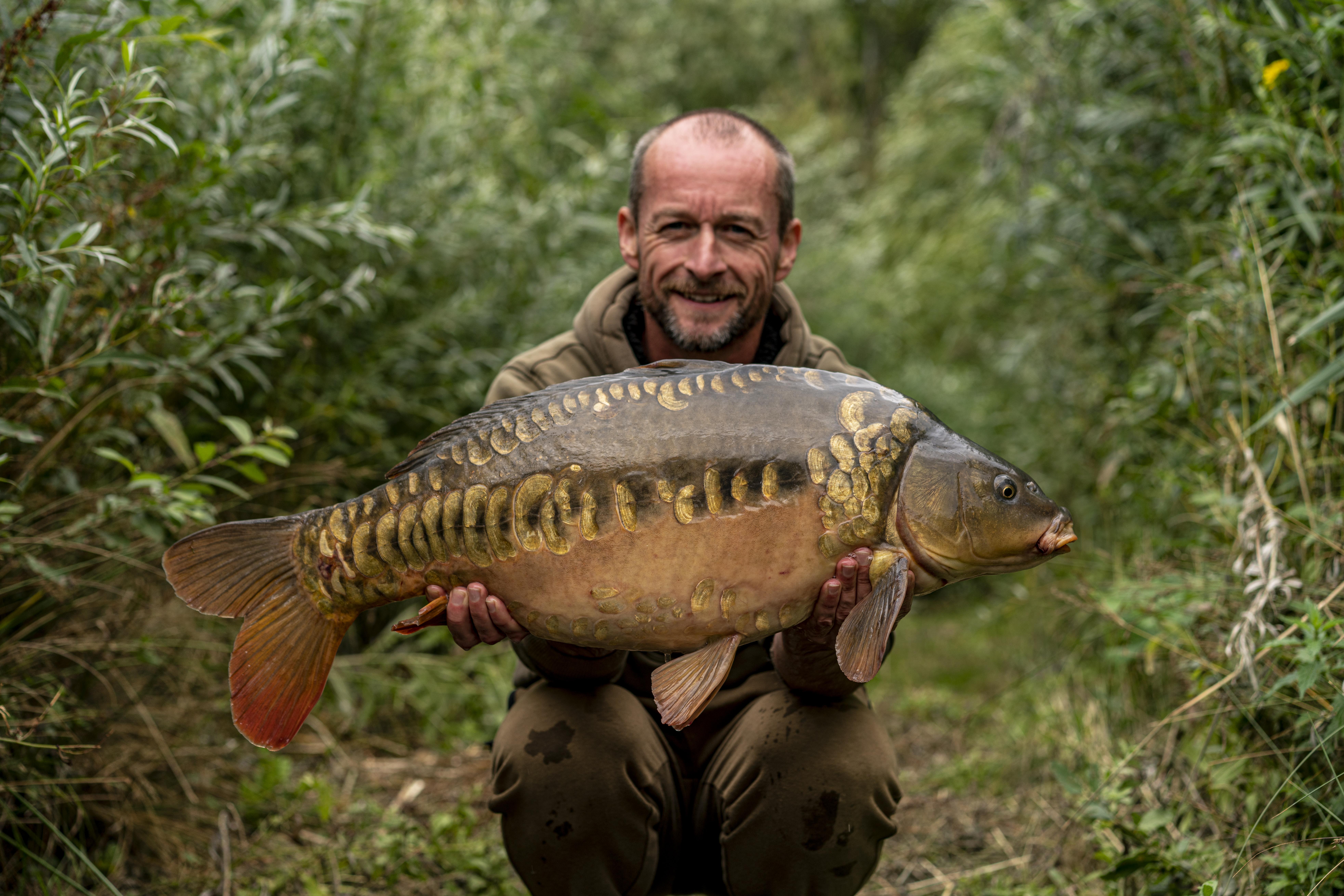Quote Unquote - John Kneebone
Mainline’s chief filmmaker talks crashing drones, who’s best in front of the camera and what makes for a blockbuster angling film

At one stage in your life, you fished full-time for a number of years. How different is life now you’re on the other side of the lens?
“Life is very different in so many ways. Primarily, there’s been a significant reduction in my fishing time. A lot of people might think that when you go to a lake to film someone, you get to fish yourself as well, and that is sometimes the case. Rarely, however, do I take up the opportunity to do so, and no, I’m not mad. I just find that I never really do one thing or the other, i.e. film or fish as well as I could. I much prefer to concentrate on the filming, and not fish. Then, when I do fish, that is my sole focus.
“I would also say that my life and my fishing are much more balanced. I remember one occasion when I’d returned home after a four-night session. The lake’s biggest prize was due a capture, and at something like 5 a.m. my phone bleeped with a text notification. As it was so early in the morning, I was sure it was another angler letting me know that the big ’un had come out. I’d not even opened my eyes and I felt completed deflated, pissed off and frustrated. I reached for my phone only to find that it was a text from my data provider! I’ll never forget that moment, not so much because it was a wake-up call, but rather just a reminder of how carp fishing can take over your life, to the point that you forget that there’s so much more to it. At the time, the most important consideration in my whole life was whether or not a carp had been caught!”
When did you start with Mainline, and what’s an average day like for a videographer working for one of the country’s biggest bait firms?
“Having started in a small, website admin role, to now working mainly as a videographer, I’ve worked for Mainline for nearly 20 years. It’s a company that values loyalty—that’s something that’s important to me, so it’s really been great. I’ve been given so many opportunities to progress, and to express my ideas.
“In recent years this freedom has allowed me to not only shoot and edit films with anglers like Darrel Peck, ‘Laney’ and ‘Spoons’, I’ve also been able to shoot weekly videos to fit the style of my favourite social platform, YouTube. For the past six months or so, however, I’ve been more involved in design work. As I say, I’ve been given the opportunity to try my hand at a great many things within the media world of Mainline.”
From all the years you’ve worked in the trade, if you had to pick one that stands head and shoulders above the rest, which would it be and why, and what made it exciting?
“That’s easy, it’ll be the year I made the move from full-time angling to working for Toffee Publications, filming and producing articles for CARPology, and for Maximum Carp. The learning curve was steep, but that’s exactly what I wanted. Flying up to Glasgow to visit the Daiwa factory, and working on Below the Surface were amazing, but what I found most exciting was that every week, and for every issue, we’d come up with so many new ideas for content. I really think we pushed things forward at that time… I couldn’t wait to pick up the camera to try something different, and just become better.”
What has been the biggest cock-up when you’ve been out shooting a film or for a magazine article?
“Thinking that if I duct-taped a 360 camera to an FPV drone it would still fly! The 360 camera didn’t even belong to me, it was Jon ‘Shoes’ Jones’ and I’d convinced him to let me give it a try. The camera was attached to its short pole, and this was taped to the drone. The idea was that the pole wouldn’t be seen as the camera filmed the drone flying, as if in tow. As it took off, Shoes watched the camera’s footage on his phone, and all I could hear was him saying, ‘It’s amazing! It’s amazing!’ I wasn’t so sure. The drone was really unbalanced as it flew down this spit of land that pointed out into the lake. Then, the drone’s flight controller seemed to think, Stuff this! It took the drone up to around 100ft and fail-safed. The motors then stopped and the drone fell to the ground! Fortunately, the drone came down on land, and it missed the parked vehicles that belonged to the anglers we were filming—just! Shoes was no longer saying how amazing it was as he picked up all the bits of his camera!”
Who is the most impressive angler you’ve filmed, in terms of their skill and their natural ability in front of a camera?
“Hmm. There are a few, and it’s a tricky question as you need both of these attributes. Without fish, though, there’s no film, and for that reason I’ll say Darrell Peck. He can always work it out and get that net wet, and he’s also very natural in front of the camera. Dave Levy also has that ability to always catch one in the end, even when it’s not looking good.”
And who do you enjoy filming with most?
“I think that would be Neil Spooner. He just edges it, because he always asks if I’m happy with the shot before he delivers his dialogue, and that makes such a difference. Sometimes it’s tricky getting things just right—exposure, composition, etc.—and Spoons understands that, I think. He’s also exactly the same bloke on film as he is off it. I always look forward to filming trips with Neil.”

How structured are your shoots? Do you just go with the flow, or do you have a script to follow?
“I like to create a story whilst going with the flow, if that makes sense. The story is so important, and I think that my job as the cameraman is to let the angler get on with it as they assess the fishing situation, adapt when they need to, and do what they love to do: catch carp. My job is to film all that and create a beginning, a middle and an end, or set-up, conflict and resolve. The viewer can then be carried through the video or film.”
Filming with the biggest names in carp fishing is the dream of so many anglers, so what have been the biggest angling lessons you’ve learnt from them?
“Well, it’s a reminder, really, rather than a lesson. Location is the most important factor of all, and after that, keeping things simple and having confidence in what you do. The biggest names and the best anglers follow a process they trust. Yes, they will adapt, but they start by finding the fish, however long it takes, and then they apply what they know.”
How do you continue to push the boundaries when filming when everything has seemingly been done?
“I just try to be different, and I don’t look at what others are doing in angling filmmaking too much. Other genres have advanced far more than ours. We recently started using FPV drones to obtain a completely different style of footage, and the idea came from watching and researching what filmmakers are doing outside angling. Fishing situations may not change too much, but there’s a lot of scope where camera work is concerned.”
In your eyes, what are the key ingredients of the perfect angling film?
“A great story, a set-up where the angler is faced with a huge task, followed by the conflict, and by that I mean the difficulty and the setbacks. Sorry, but I’m happy to see the anglers I’m filming struggle a bit to begin with, blank or lose one. This makes the ‘resolve’ so much better when they then work it out, and it all comes good at the end. These ingredients can add tension, emotion and excitement, which are all the things you want to see, and they relate to everyone’s carp fishing.”
Finally, has working in the angling industry killed your love for actually going carp fishing, or do you still get that same buzz you had when you fished full-time?
“No, not at all. In fact, it’s probably benefited it. With less time available, I’m now fishing a large array of waters for carp of all sizes, rather than campaign-angling on one water for a specific carp, as I did when I fished full-time. The buzz is always the same. I’ll always have a sleepless night before a session, and that never changes. The anticipation of a tight line, even though it’s not as often now, will always create that same buzz!”



